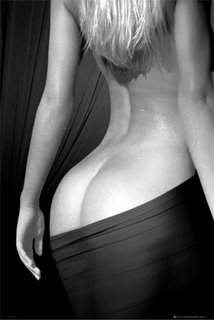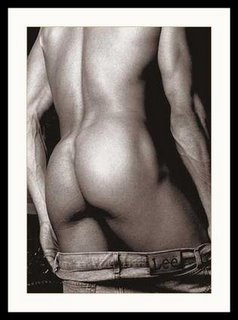One Girl of Many
by Charlotte Anna Perkins Gilman
1.
One girl of many. Hungry from her birth
Half-fed. Half-clothed. Untaught of woman’s worth.
In joyless girlhood working for her bread.
At each small sorrow wishing she were dead,
Yet gay at little pleasures. Sunlight seems
Most bright & warm where it most seldom gleams.
2.
One girl of many. Tawdry dress and old;
And not enough beneath to bar the cold.
The little that she had misspent because
She had no knowledge of our nature’s laws.
Thinking in ignorance that it was best
To wear a stylish look, and -- bear the rest.
3.
One girl of many. With a human heart.
A woman’s too; with nerves that feel the smart
Of each new pain as keenly as your own.
The old ones, through long use, have softer grown.
And yet in spite of use she holds the thought
Of might-be joys more than, perhaps, she ought.
4.
One girl of many. But the fault is here;
Though she to all the others was so near;
One difference there was, which made a change.
No wrong thing, surely. Consequence most strange!
Alike in birth. Alike in life’s rough way.
She, through no evil, was more fair than they.
5.
So came the offer, “Leave this story cold
Where you may drudge and starve till you are old.
Come! I will give you rest. And food. And fire.
And fair apparel to your heart’s desire;
Shelter. Protection. Kindness. Peace & Love.
Has your life anything you hold above?”
6.
And she had not. In all her daily sight
There shone no vestige of the color White.
She had seen nothing in her narrow life
To make her venerate the title “Wife.”
She knew no reason why the thing was wrong;
And instinct grows debased in ages long.
7.
All things that she had ever yet desired
All dreams that her starved girlhood’s heart had fired
All that life held of yet unknown delight
Shone, to her ignorance, in colors bright.
Shone near at hand and sure. If she had known!
But she was ignorant. She was alone.
8.
And so she - sinned. I think we call it sin.
And found that every step she took therein
Made sinning easier and conscience weak.
And there was never one who cared to speak
A word to guide and warn her. If there were
I fear such help were thrown away on her.
9.
Only one girl of many. Of the street.
In lowest depths. The story grows unmeet
For wellbred ears. Sorrow and sin and shame
Over and over till the blackened name
Sank out of sight without a hand to save.
Sin, shame, and sorrow. Sickness, & the grave.
10.
Only one girl of many. Tis a need
Of man’s existence to repeat the deed.
Social necessity. Men cannot live
Without what these disgraceful creatures give.
Black shame. Dishonor. Misery & Sin.
And men find needed health & life therein.
**********
I belong to a poetry circle and this is the poem that will be up for discussion next Wednesday and I thought I would share it with all of you. Enjoy!
Comments are always appreciated. Good night everyone.
N Posted by Rain at 8/17/2006 01:32:00 AM



Wednesday, August 16, 2006
Theda Bara
Theda Bara is best known as the silent movie star who brought the character of the vamp, the woman who used her allure to attach herself to a man and seduce and destroy him , to the silver screen. Bara was born Theodosia Goodman in Cincinnati, Ohio, Her father was an immigrant from Eastern Europe and her mother a wigmaker of French/German descent. She grew up in the prosperous Jewish community in the Avondale section of the city. She was drawn to acting at an early age and was a member of the drama club in high school. After two years at the University of Cincinnati, she dropped out , moved to New York, and became a stage actress.
In 1914, with her career stagnant, she met movie director Frank Powell. He obtained for her a first part as an extra in a now lost film, The Stain but by the end of the year she had been cast as the villainess in the Fox Company’s new film, A Fool There Was. It was shot at the Fox Studio in Ft. Lee, New Jersey, while Theda lived in New York. The play with which the film began, inspired by Rudyard Kipling poem, “The Vampire,” was written by Poter Emerson Browne. It opened in New York in 1909 to critical and popular acclaim. The film version made Goodman reborn as Theda Bara, a star. She played the vampire who destroyed the life of an American diplomat. William Fox may have decided to bank his fortune on the film because of the success of another recent film with a similar theme, The Vampire released by the Kalem Film Company.
The uniqueness of A Fool There Was rested not so much with its originality as with the publicity program created by Fox. To sell the film with the unknown star, a fictional biography of Theda Bara was created and presented in a press conference in January 1915. She was described as an Arabian actress and came before the reporters in a fur-bedecked coat. After the press conference, a young Louella Parsons was granted a brief few minutes with Theda who confessed to the charade. Parsons sucked up the exclusive, a leak planned all along by Fox’s publicity men. The day after the newspapers published the press account, Parsons released her exclusive, and the planned leak turned Theda into one of the most talked about women in the country, and the movie had not yet opened.
A Fool There Was became one of the highest grossing films of 1915. It was introduced by a live actor who read Kipling’s poem. The critics praised Theda as a great actress and the film for not giving in to demands for a happy ending. While Fox searched for other films for his new star, he assigned Bara to a role in her second movie, The Kreutzer Sonata. She again played a wicked woman who stole the husband of another woman. She did not get away with it this time, however, and the wife eventually killed her. Her third film, The Clemenceau Case could also be classified as a camp movie and was enormously successful. Theda was being praised by critics, drawing large audiences, and becoming the target of moral critics who were calling for the banning of her films.
While filming her fourth movie, The Devil’s Daughter, the nickname she had picked up around the set, “Vamp,” was mentioned to a reporter. He used it, and it became the common way to describe Theda and the roles in which she was being cast. As she played the part to reporters at press conferences, the publicity scripts became more involved and eventually suggested she was a reincarnation of some famous wicked ladies such as Lucretia Borgia or Elizabeth Bathory.
While Theda received good reviews for her next film, The Two Orphans, in which she played a heroine, it was a flop at the box office in large part to Fox’s pulling the publicity budget. Fox wanted her to return to the vamping. The next film was a gangster movie with the made-for-Theda title Sin. The Fox publicity camp went to work call the nation to “Sin with Theda Bara.” Sin was a great success in spite of being banned in several states.
Over the next several years Theda starred in a host of films, and while she played a variety of roles, she continually returned to the camp role of which her audiences yearned. Her star status earned her leads in more impressive films such as Carmen, Camille, and Cleopatra.
Theda’s vamp image permeated the popular culture and inspired a number of songs such as “The Vamp,” “I’m a Jazz Vampire,” “Since Sarah Saw Theda Bara,” and “Sally Green, the Village Vamp,” as well as a new dance, The Vampire Walk. However, from the heights of stardom, after only five years, in 1919 her career began to wane. Theda was assigned to a series of bad films and her drawing power dropped seriously. In attempting to change her image, she starred as an Irish Lass in Kathleen Mavourneen, which received good reviews but turned into a disaster. It was rejected by the Irish because it portrayed the poverty in the old country and because Theda, a Jew starred as an Irish girl. Angry theater patrons set off stink bombs and riots.
Theda left Fox in 1920 and found herself at the age of 35 a largely unmarketable commodity. While she made several movies during the 1920’s, her career was obviously over, and after Madame Mystery in 1926, she never returned to the movies ( although she did appear on the stage occasionally). She lived a long life in her Beverly Hills home, remembered to her death as the original vamp. She died in Hollywood in 1955.
Sources:
Golden, Eva. Vamp: The Rise and Fall of Theda Bara. Vestal, NY: Emprise Publishing, 1996.
***********
I hope all of you follow the links on this page because stoopid Blogger is not allowing me to put in any pictures of Theda. =( Perhaps I will try again in a couple of days.
Many of my friends as well as my readers have a Dell Computer. There is a recall on the batteries. If you or anyone you know has a Dell Laptop please go here to find out if your product has been recalled.
***********
I have a very busy day ahead of me in the morning, so I am off to bed. Have a good day everyone! Comments are always appreciated.
N Posted by Rain at 8/16/2006 12:40:00 AM



Monday, August 14, 2006
Monday Hotties

 One for the men and one for the women, enjoy!
One for the men and one for the women, enjoy!
My weekend was spent relaxing at home with family and friends. How was your weekend? By the way is anyone having difficulties publishing post's with Blogger? I have lost two posts this weekend. Grrr
N Posted by Rain at 8/14/2006 12:50:00 AM










